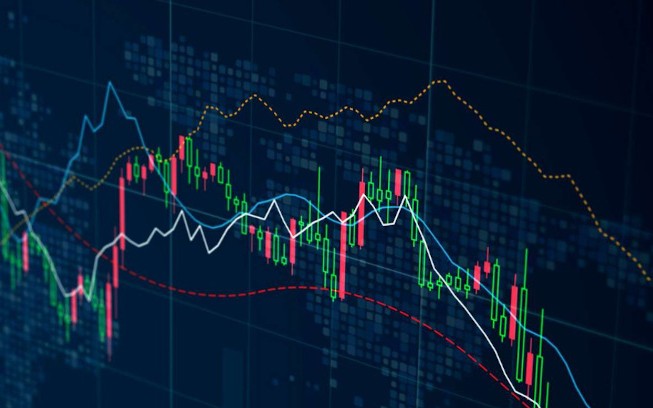
The Ultimate Guide to Forex Currency Trading: Tips and Strategies
Forex currency trading, often referred to as forex or FX trading, has emerged as one of the most popular financial markets in the world. With a daily trading volume that exceeds $6 trillion, it is no wonder that traders from various backgrounds – from novices to seasoned professionals – are flocking to participate in this dynamic and inherently liquid market. Whether you are based in South Africa or anywhere else, it is essential to equip yourself with knowledge and tools for successful trading. For comprehensive resources, check out forex currency trading Forex Brokers in South Africa.
Understanding the Basics of Forex Trading
At its core, forex trading involves the exchange of one currency for another. Currencies are traded in pairs, for example, EUR/USD (Euro/US Dollar), and changes in their exchange rates provide the basis for profit or loss. The forex market operates on a decentralized basis, which means there is no central exchange, allowing traders to conduct transactions 24 hours a day. A strong understanding of currency pairs, market trends, and economic indicators is fundamental for success in this field.
The Importance of Leverage in Forex Trading
One of the significant attractions of forex trading is the ability to use leverage. Leverage allows traders to control a larger position than what would be possible with their own capital. For instance, with a leverage ratio of 100:1, a trader can control a $100,000 position with just $1,000. While leverage can amplify profits, it can also lead to substantial losses, emphasizing the need for sound risk management strategies.
Choosing the Right Forex Broker
Selecting a suitable forex broker is crucial for any trader’s success. Factors to consider include the broker’s regulatory compliance, trading platform, available currency pairs, spreads, and commissions. Traders should also look for brokers that offer educational resources, customer support, and tools that can enhance trading strategies. The choice of broker can greatly influence trading performance, making this a critical step in the trading process.
Technical Analysis vs. Fundamental Analysis
Understanding the two primary analysis methods — technical and fundamental analysis — is vital for developing effective trading strategies. Technical analysis focuses on price charts and patterns to predict future price movements. Traders use various indicators, such as moving averages or the Relative Strength Index (RSI), to help make informed decisions.
On the other hand, fundamental analysis examines economic indicators, interest rates, and geopolitical events to determine a currency’s intrinsic value. Traders who blend both methods often have a more comprehensive understanding of the market and a better chance of uncovering trading opportunities.
Developing a Trading Strategy

A well-defined trading strategy serves as the blueprint for trading operations. Successful traders often spend considerable time developing a plan that outlines their trading style, goals, risk tolerance, and entry/exit strategies. A typical strategy might include setting stop-loss orders to protect against significant losses while taking calculated risks to maximize potential gains.
Popular trading strategies include day trading, swing trading, and scalping, each with its distinctive approaches to analyzing the market and executing trades. It is essential to choose a strategy that aligns with your personality and lifestyle as well.
The Role of Emotions in Forex Trading
Emotions can significantly impact trading decisions. Fear and greed are two primary emotions that traders must manage effectively. Fear can lead to hesitation, causing a trader to miss out on potential profits, while greed may result in taking unnecessarily high risks. Maintaining discipline, sticking to your trading plan, and focusing on systematic decision-making can help mitigate emotional trading pitfalls.
Utilizing Trading Tools and Resources
To navigate the forex market efficiently, traders should leverage various tools and resources available. Trading platforms often provide charts, technical indicators, and news feeds that help traders stay informed and make timely decisions. Additionally, utilizing demo accounts to practice trading strategies without risking real capital can be an effective way for beginners to build confidence and gain experience.
Risk Management Techniques
Implementing robust risk management tactics is crucial in forex trading. Techniques such as setting a risk-reward ratio, diversifying trades, and using stop-loss orders can help protect your trading capital. A common principle is to risk only a small percentage of your account balance on any single trade (typically 1-2%). By adopting these techniques, traders can better withstand losing streaks and maintain a sustainable trading approach.
The Future of Forex Trading
As technology continues to advance, the forex market is undergoing significant changes. Algorithmic trading, artificial intelligence, and machine learning are increasingly being utilized to analyze vast amounts of data and execute trades. Traders who harness these innovations are likely to gain a competitive edge in a rapidly evolving landscape.
Moreover, regulatory changes around the globe are shaping the way forex trading is conducted. Staying updated on these developments is crucial for all traders, as regulations can impact trade execution, deposit requirements, and the types of instruments available for trading.
Conclusion
Forex currency trading offers exciting opportunities; however, it requires dedication, education, and a disciplined approach. By understanding the underlying principles, developing a solid trading strategy, and managing risk appropriately, traders can navigate the complexities of the market effectively. Whether you are new to forex trading or looking to enhance your existing skills, continual learning and adaptation are key to long-term success. Embrace the journey and trade wisely!
